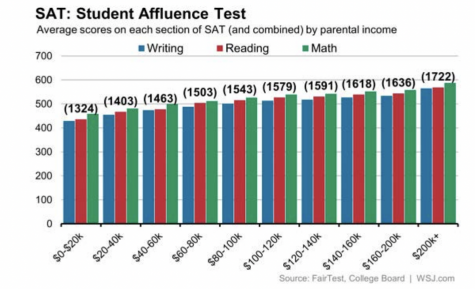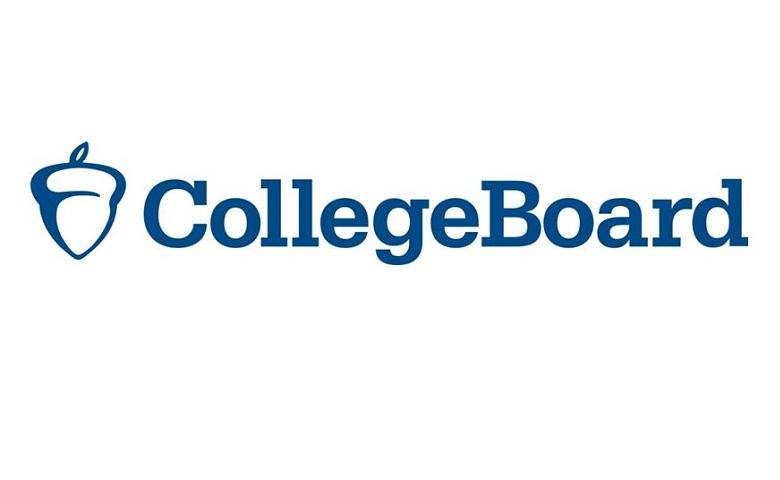College Board
Too much influence?
The College Board is a nonprofit organization formed to expand access to higher education. Established in December 1899 by a collection of twelve universities and three college preparatory academies, its main goal was to streamline the admissions process by providing materials to students and administering standardized tests that would enable it to differentiate students’ academic abilities. It is not a specific school, but rather a collection of more than 6,000 institutions that all have a membership to its services, including AP classes and standardized tests that can often determine college acceptance or rejection. However, the College Board’s hefty testing fees, grading discrepancies, and allegations of discrimination leave many wondering about the validity of the establishment and whether or not it should play such an important role in the college admissions process.
The College Board expects students to commit to taking their AP tests by the end of October, more than six months before the test actually happens. The idea is to get students to make a commitment to learning the material throughout the year in preparation forthe actual exam, but it often leaves seniors with an unsure feeling, as this date is before early round college decisions are out and they do not know if they will get credit or not. As for juniors and sophomores, they have just a two month glimpse into the course before they are forced to commit. Many do not know whether to take the optional exam based on their schedules and comfortability levels with the material that far in advance; it is also a huge financial commitment. The College Board also charges a $40 exam fee if students sign up and then decide not to take it; the cost of each exam is $98. The price of the tests is exorbitant and not practical for many families. The best case scenario is receiving a 5 on the exam and getting college credit for the class, which only happens if the college students select takes AP credit. But even if the college does not give credit, good scores certainly strengthen applications to selective schools. Scores can be improved by tutors and individualized preparation companies such as Princeton Review, but these services are only available to those that have the funds to pay for them. AP courses across the country are taught differently and some teachers prepare students better than others. Extra help certainly makes a 5 more attainable, separating those that can pay for the resource and those who cannot.
The SAT is also administered by the College Board and this test is essential for admission into many colleges. The cost for this test is $52, perhaps a more reasonable price, but wealthier families, once again, have the funds to pay for tutors and test

preparation companies, and on average score much higher than lower income families. Not only are wealthier families better equipped to pay for college, they also are more likely to obtain the scores that make the admissions processes easier. While the pandemic prompted many colleges to turn to a test optional format, standardized tests are generally still necessary for a complete application.
The price of the exams fuels a wealth gap and by proxy a racial wealth gap. Families with higher incomes are able to obtain higher scores for their children. In the United States, there is a huge disparity of cumulative assets across different races and ethnicities. Income inequality, housing policies, and political representation all fuel this gap for minorities in our country and these problems are passed on to future generations. Broadly speaking, a family that is unable to pay for extensive tutoring for a standardized test like the SAT is likely to have their child score in the low to mid range affecting their choice of colleges. Without an abundance of resources it is hard for students to succeed on these tests because while the information is taught in the classroom, the key to success is knowing how to approach the test and how to derive the best answer. Recent data from the College Board shows that SAT test performance by race is extremely disparate. Across the country, 57% of Asian students and 34% of white students scored at least a 1200 on the SAT in 2019 while only 13% of Hispanic students and 8% of Black students were able to achieve the same metric. These numbers support the idea of the racial gap within these tests and leave people wondering if they are a valid method for separating students’ academic abilities any longer.
The testing fees are not the only aspect of the College Board that have been questioned over the years. The organization has also faced numerous allegations surrounding grading discrepancies. In 2005, a study was conducted regarding the length of students’ SAT essays and the score they were given and it was discovered that the longer the essay was, the higher the score it was given. This reflects the human component of these tests. For AP tests, teachers are hired from across the country to grade essays and short answer questions. Many times Academy teachers mention grading fatigue when teaching students how to construct their essays, saying that it is best to get straight to the point and make sure you meet all of the requirements or the grader may not count it. But this leads many to think about discrepancies in scores. Are tests graded earlier in the day graded more harshly than those at the end of the day? The College Board does not allow students to see their graded exams; they are only given a number from 1-5 that correlates with their exam submission.
This organization has a test taking monopoly that is only strengthened by the lack of competitors in the industry. Their well-intentioned college preparatory goals have been contorted into price gouging and wealth gap feuling. It is time to level the playing field when it comes to admissions processes and educational opportunities which may start with eliminating standardized tests like the SAT and instead judge students based on the classes they take, their grades in those classes, and the types of extracurriculars they are involved in. While these metrics still have discrepancies based on race and class, they are less standardized and more passion-driven. They are able to differentiate students based on more unique and personalized talents that AP tests and SATs are unable to get across with a score out of 5 or 1600. Quite a few colleges are on board with this idea, but it needs to become a nationwide initiative to get us closer to educational equality.

Kaeli's love for literature and writing shines through her work as the School and Local Editor. A consistent writer and editor of The Advocate for two...








Ms. Abbott • Dec 3, 2021 at 6:35 pm
Kaeli- what a well done article! I especially appreciate your conclusion that there are better ways to evaluate students than standardized tests!
Dean Jacoby • Dec 3, 2021 at 3:20 pm
I have never heard of this organization. I was glad to learn more about it!
All kidding aside, I appreciate Ms. Kampschmidt’s extensive and well-written look into the College Board. I agree wholeheartedly with the main points of her article: The College Board has drifted away from the initial tenets of its founding and currently holds outsized sway over the college admissions process. There is also good evidence–as presented by Ms. Kampschmidt and elsewhere–that the College Board unintentionally reinforces a status quo that disenfranchises various important groups within society.
If I were to encourage her to add any points to her article, they would be threefold. First, her brief mention of the move to test optional during the pandemic might undersell the seismic shift that has happened and the lack of clarity around just how important/unimportant standardized testing might be in future admission cycles. Second, selective colleges that have been test optional for quite some time–Bates College being the first in this regard–have provided statistics which show that the SAT does not accurately predict college success for all students and these limitations are best remedied through test optional. Last, the College Board charges school districts and individuals to take their tests and also charges colleges that wish to purchase the names and contact information of students with certain backgrounds, interests, and scores. They get paid both coming and going.
Thank you for such a well written article!
ttopaz • Dec 3, 2021 at 11:47 am
Great article, Kaeli!